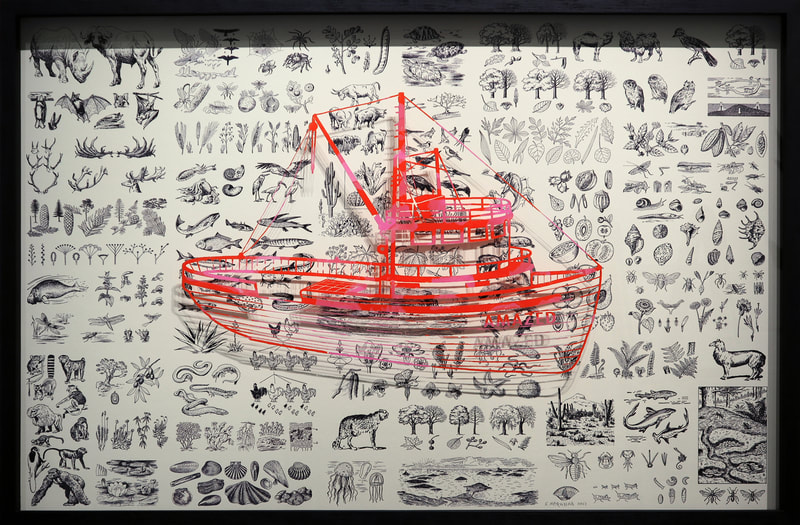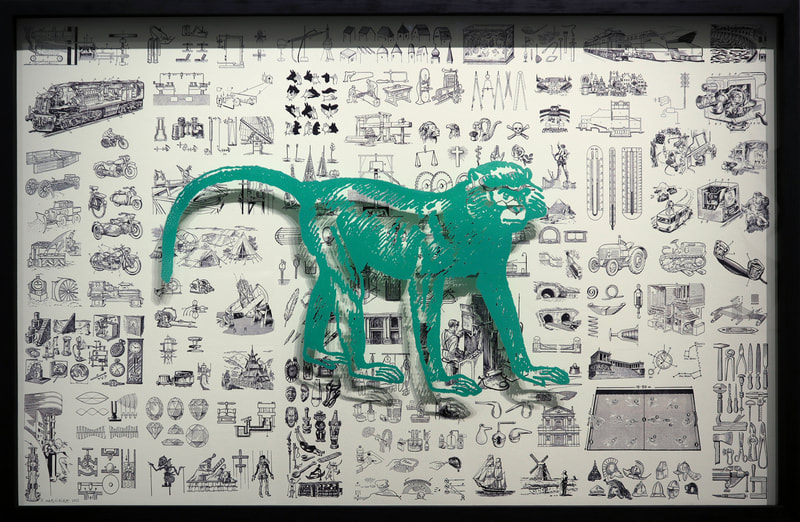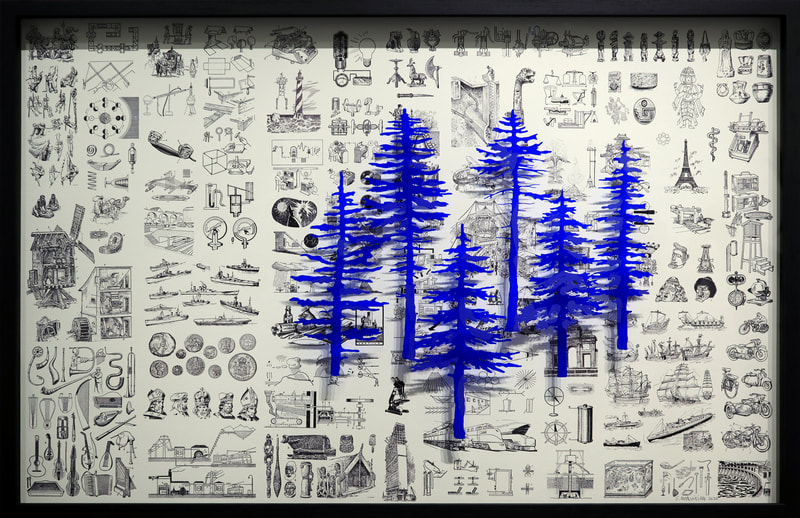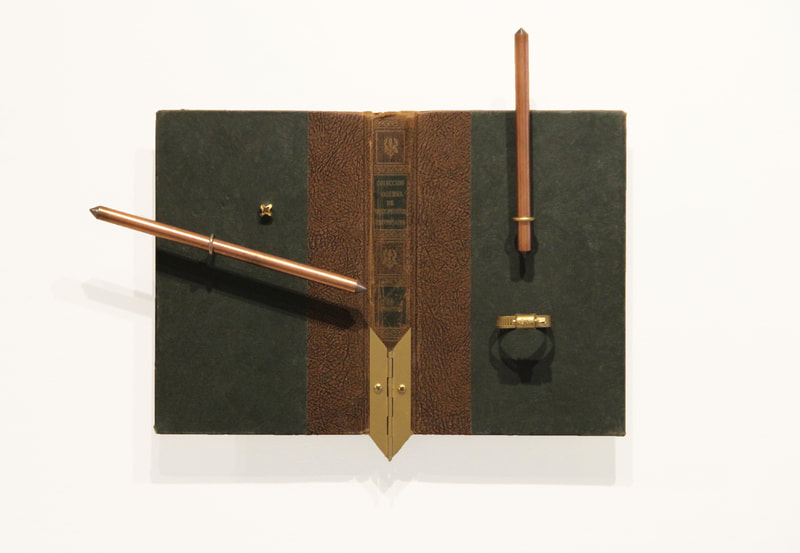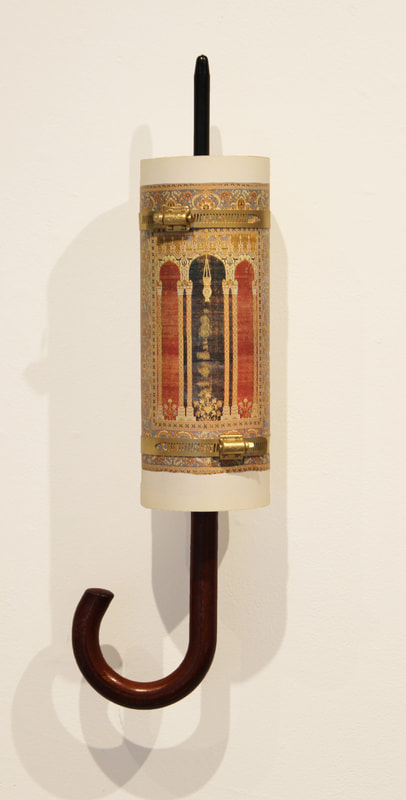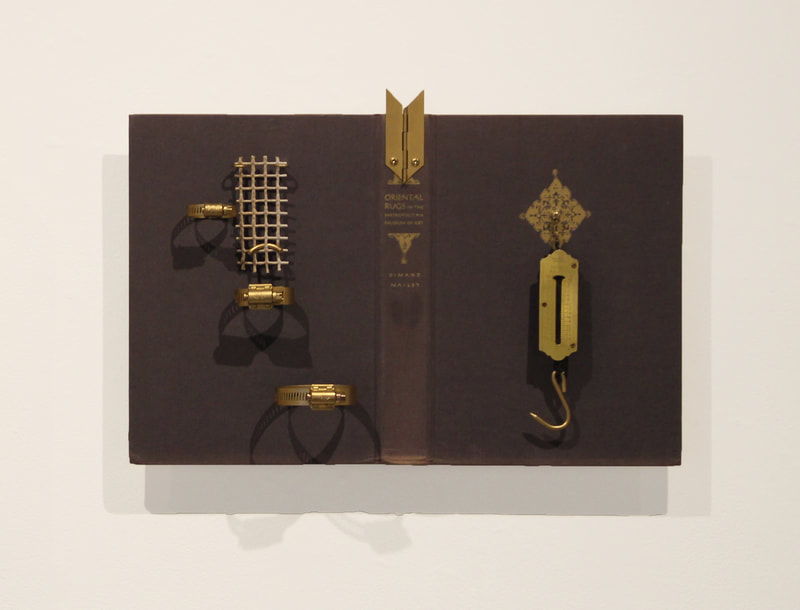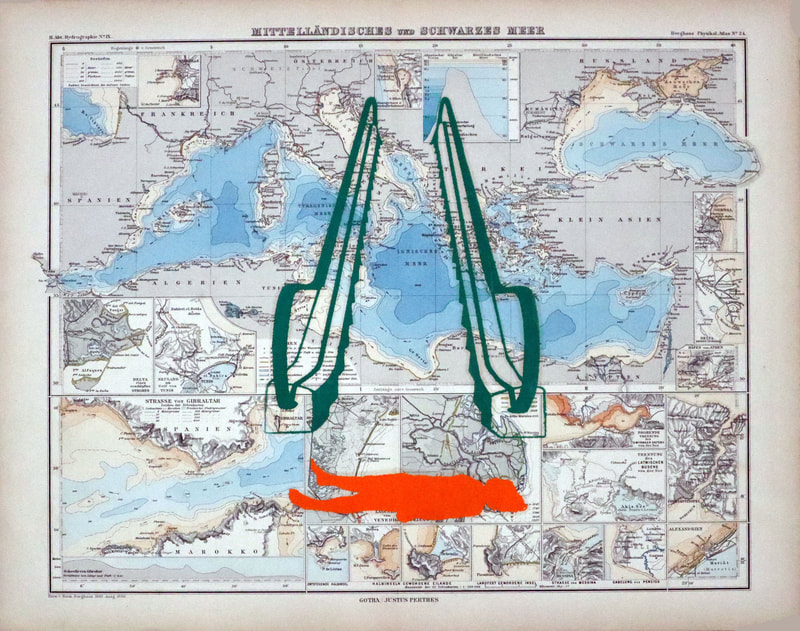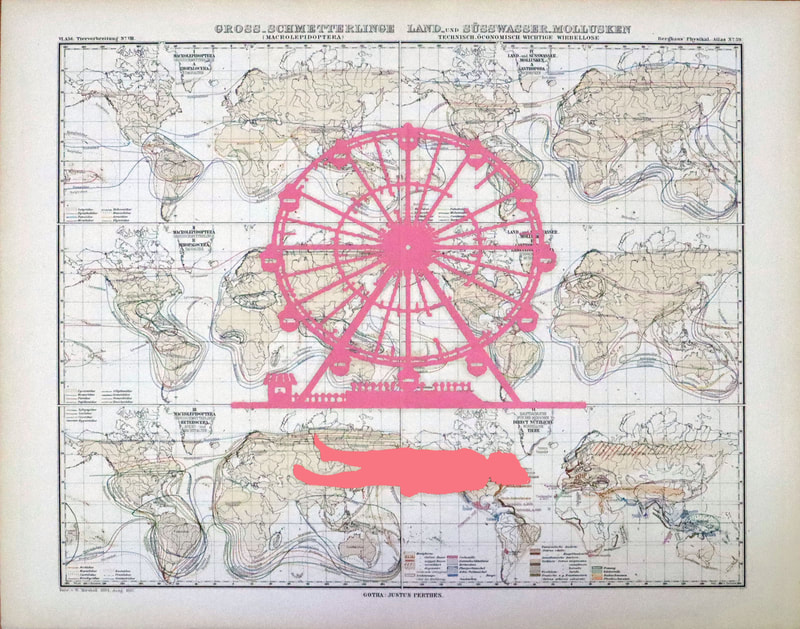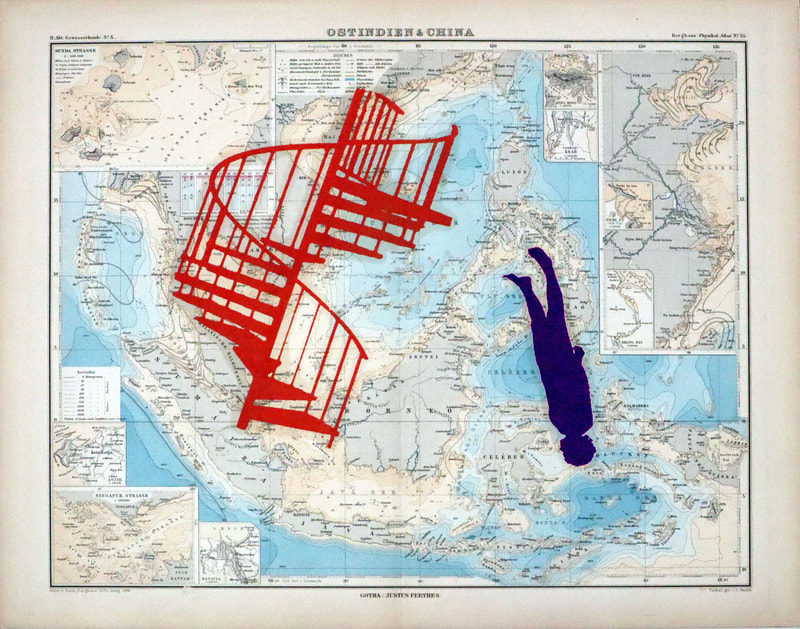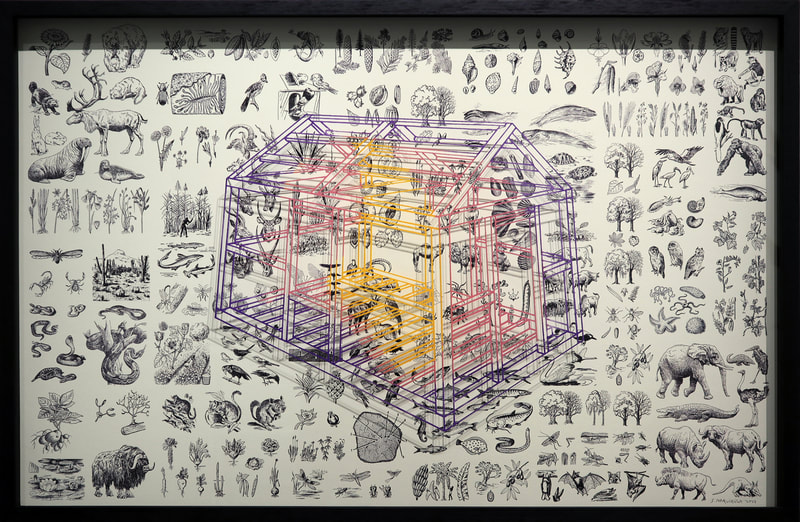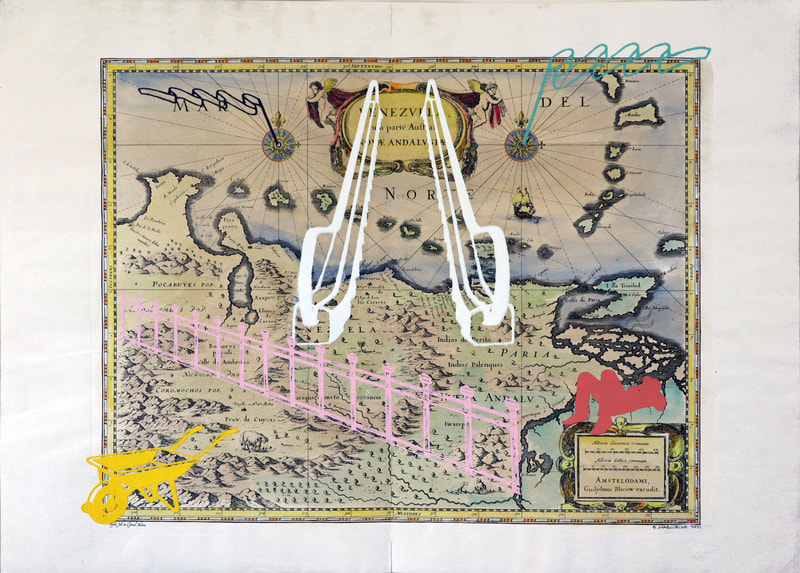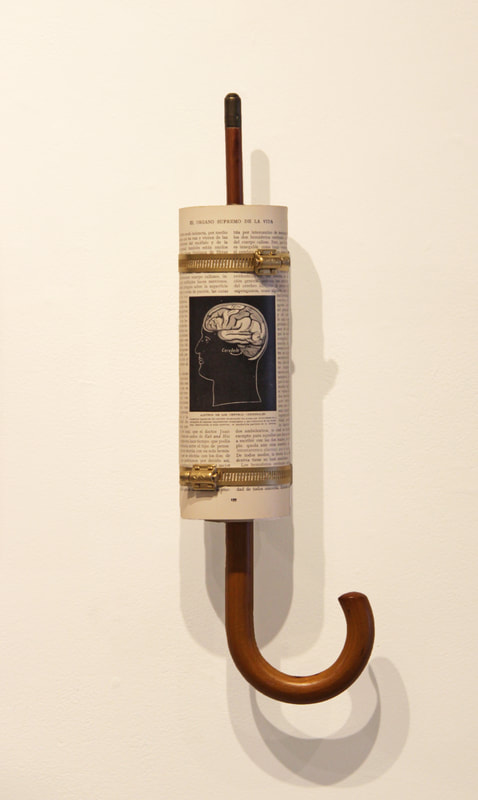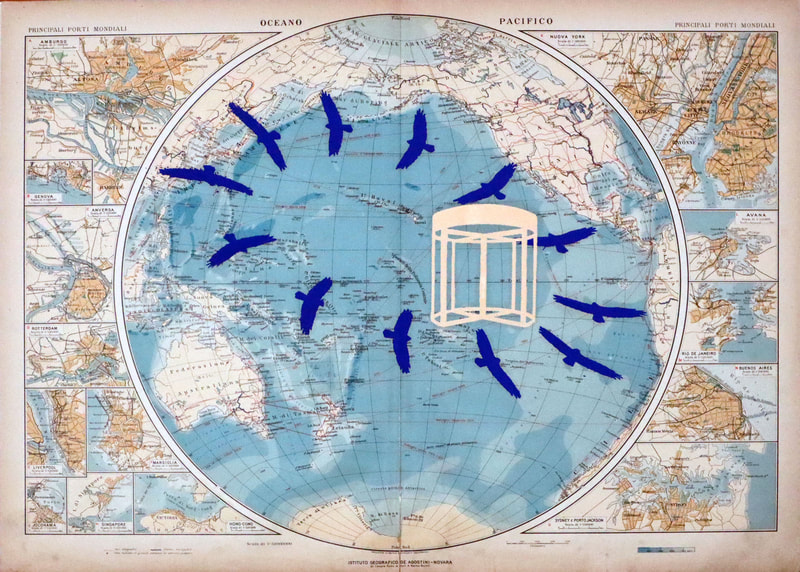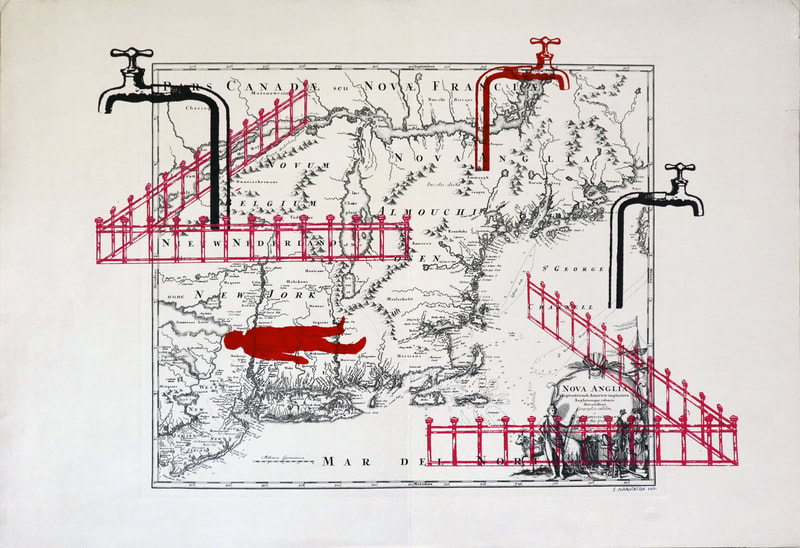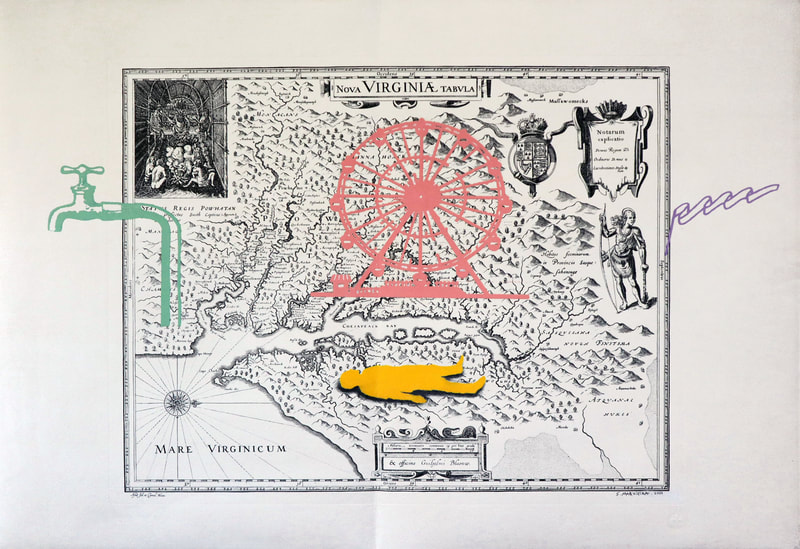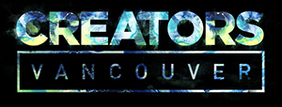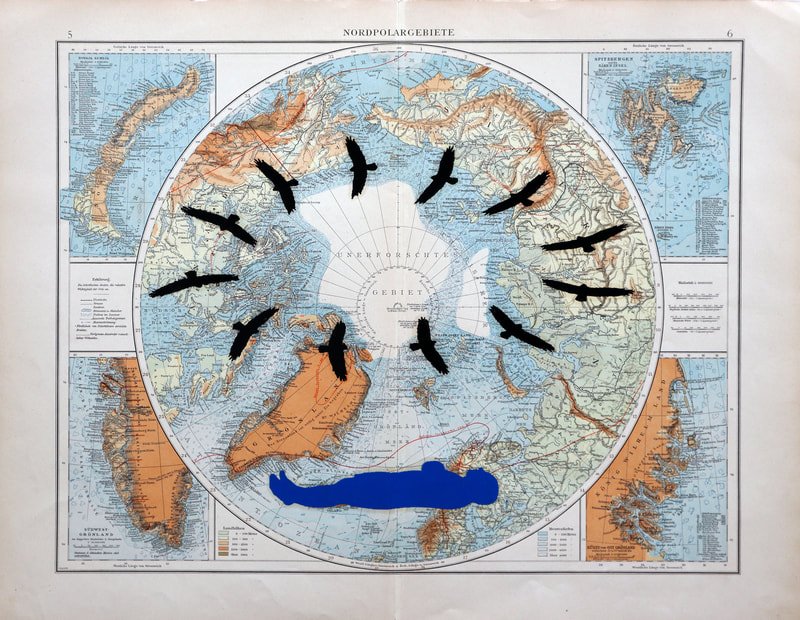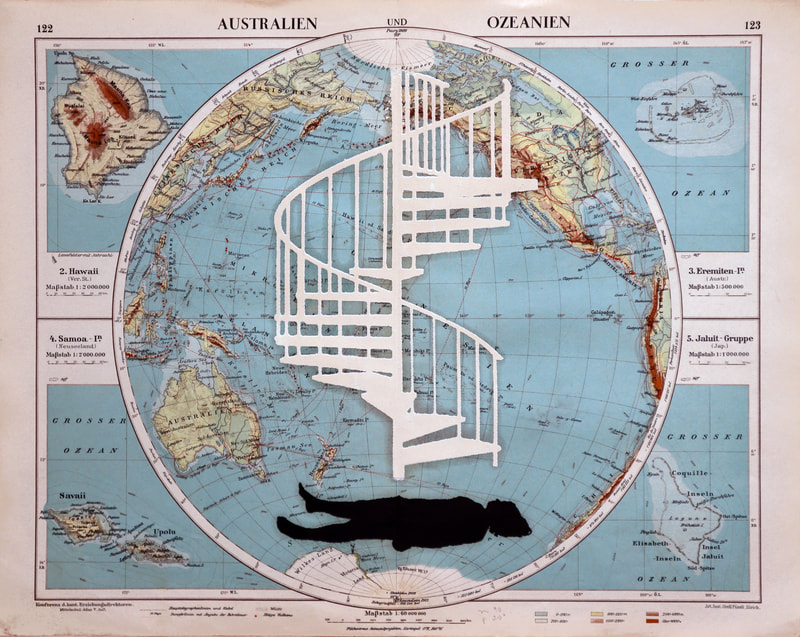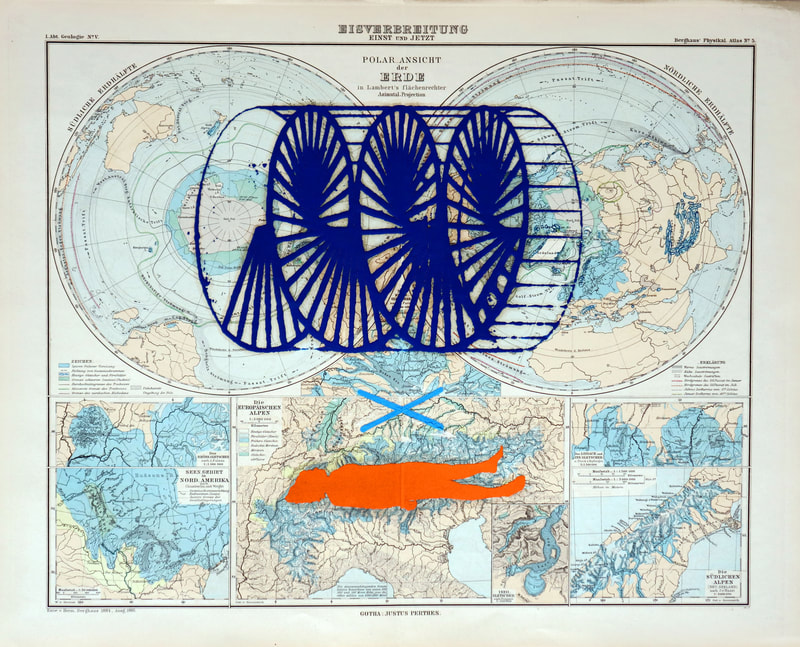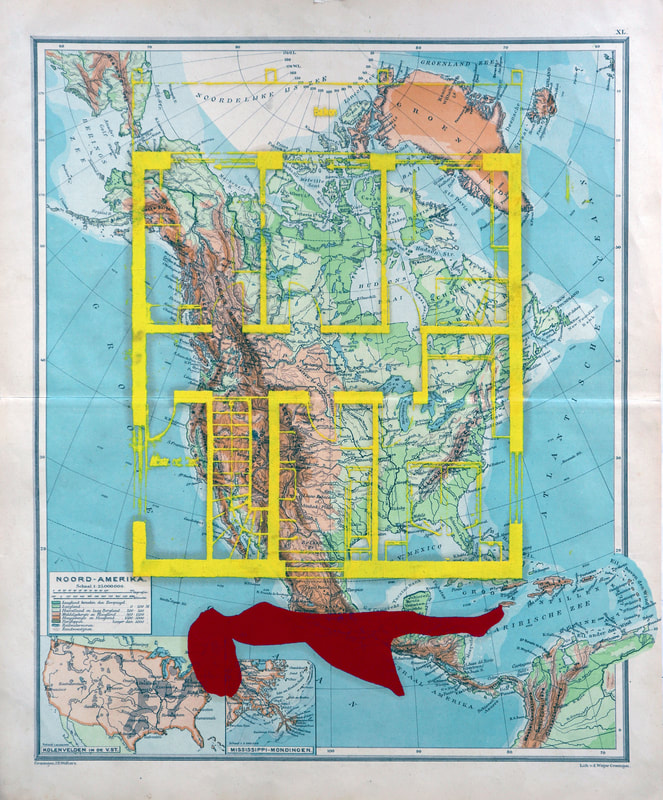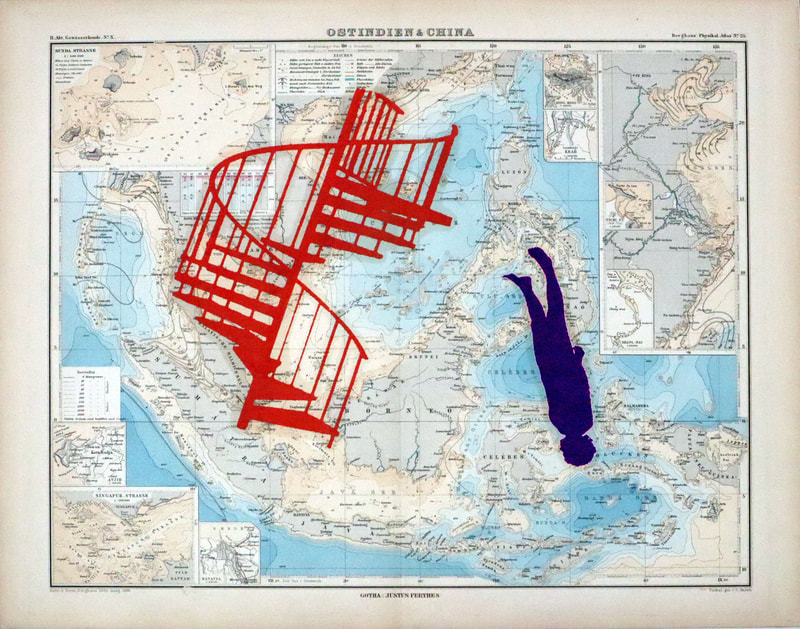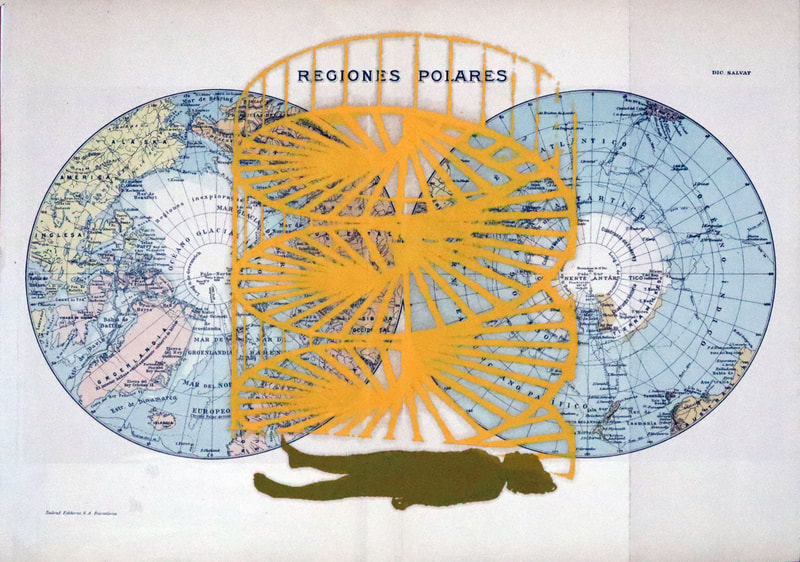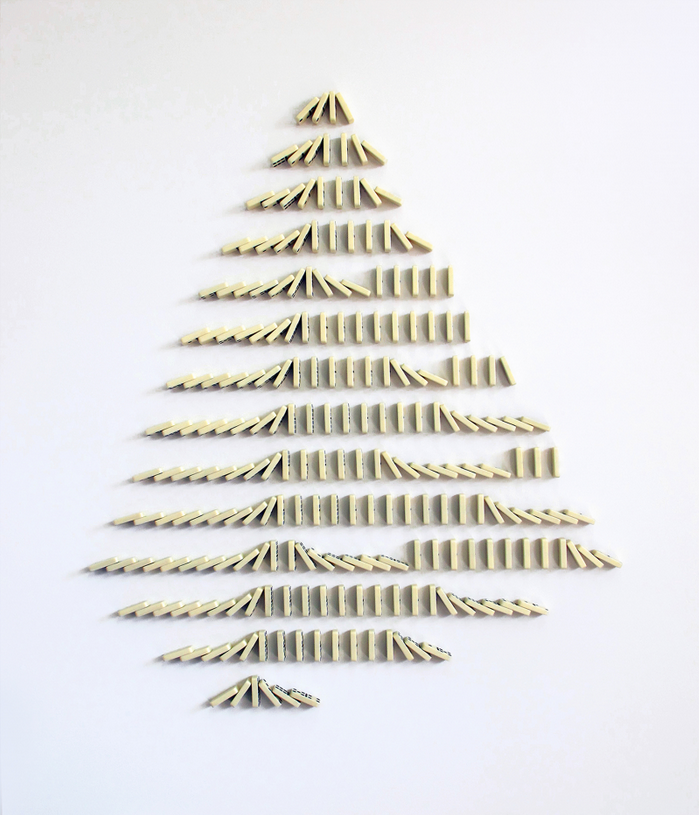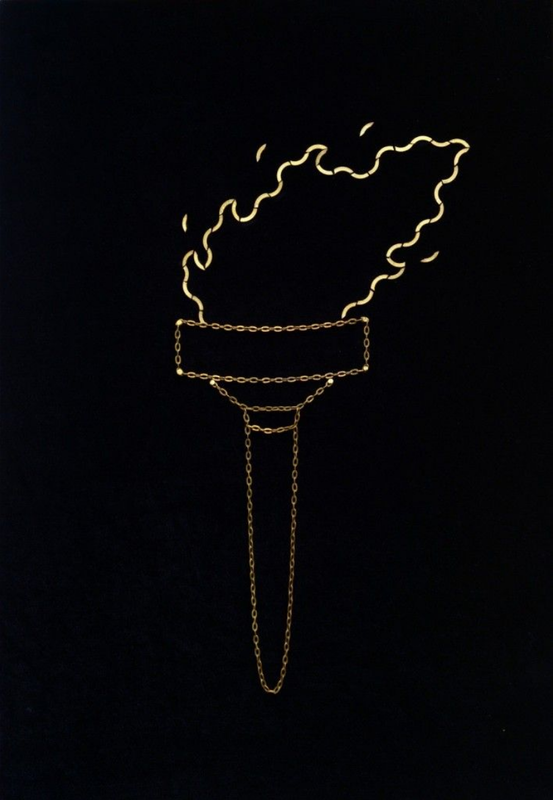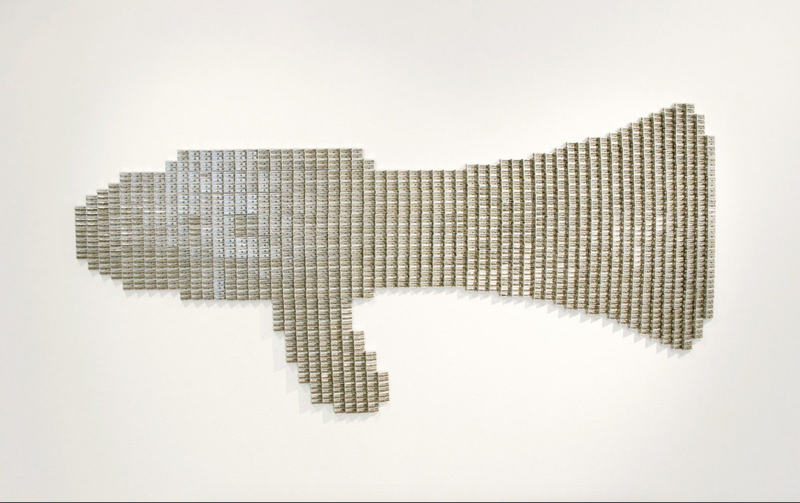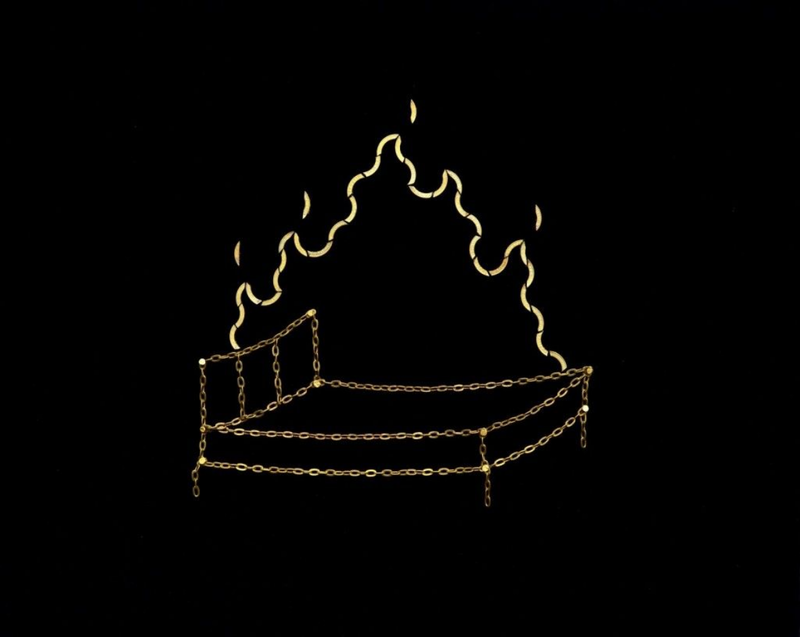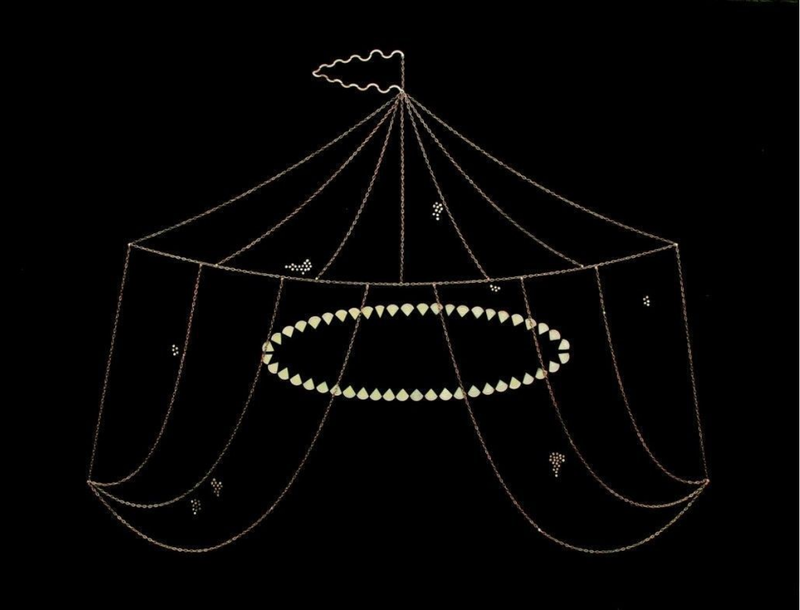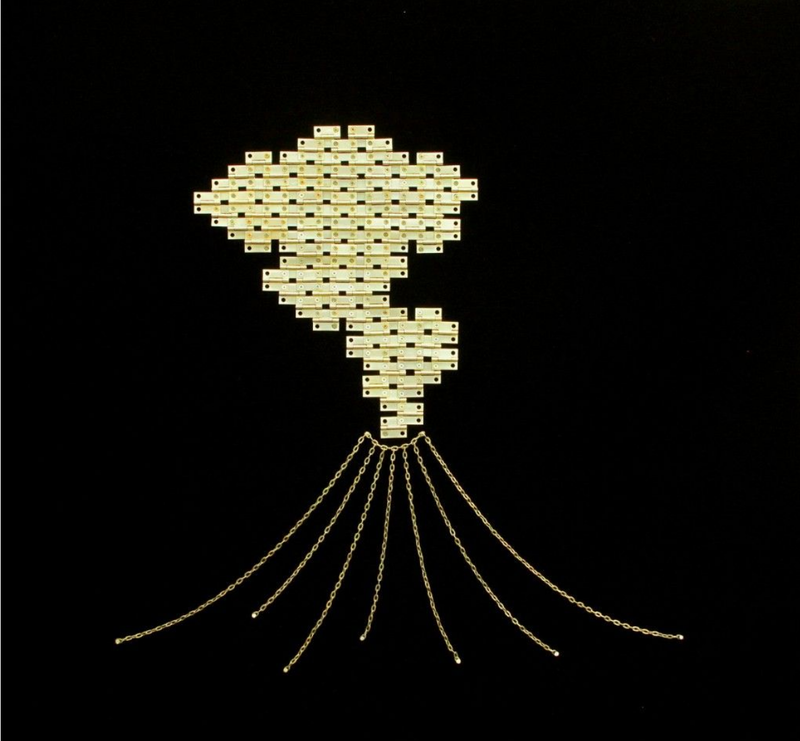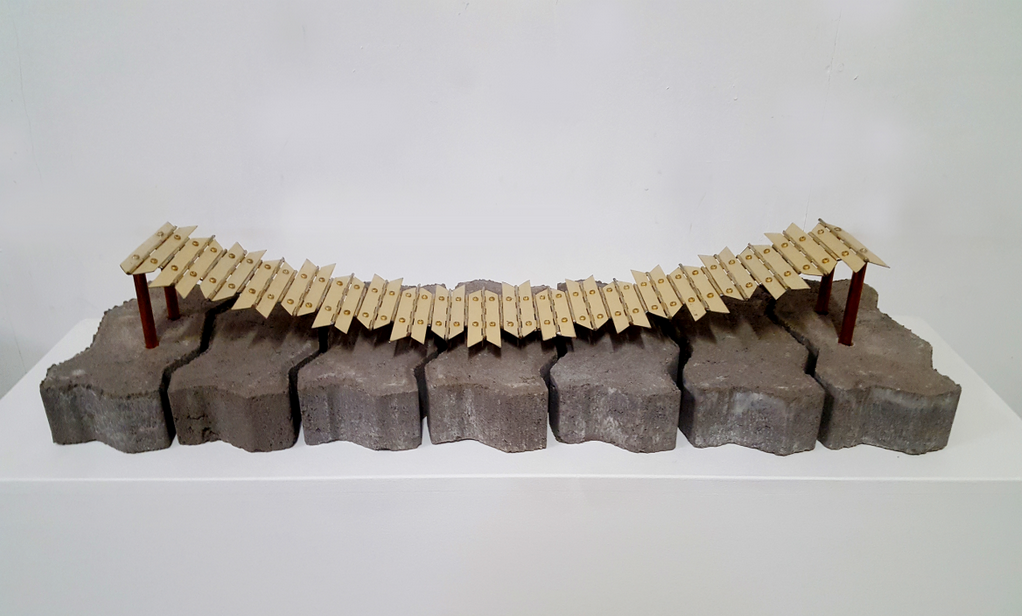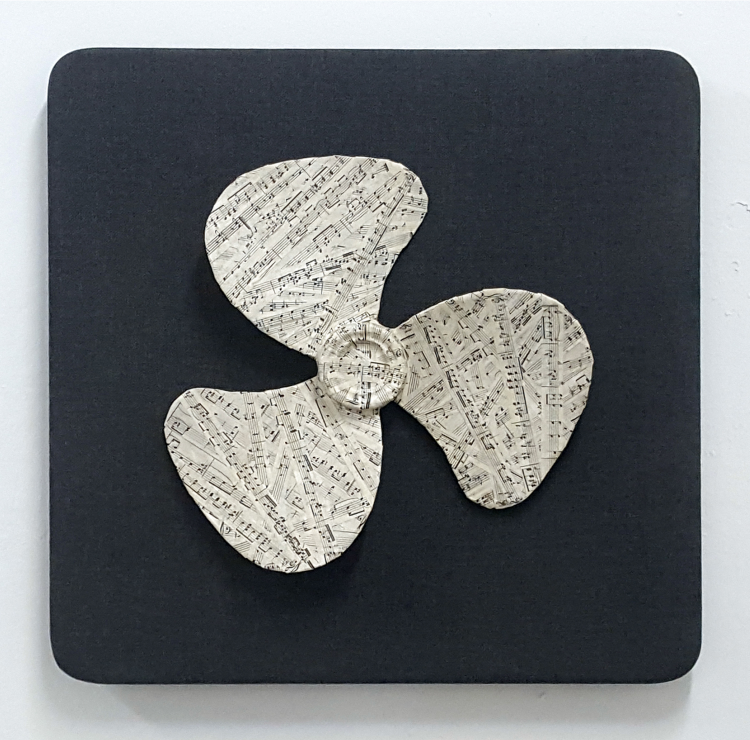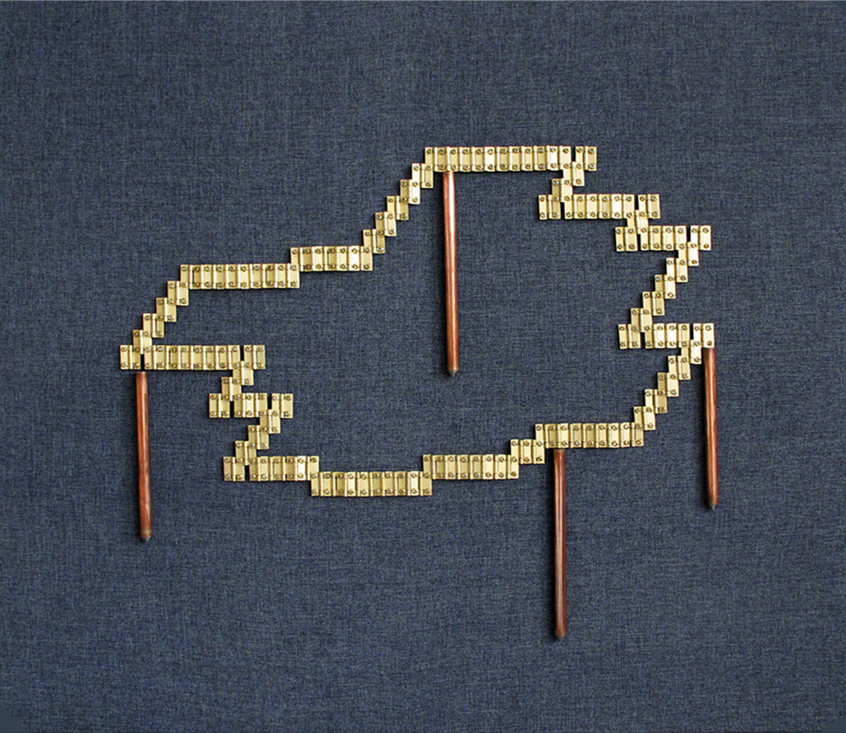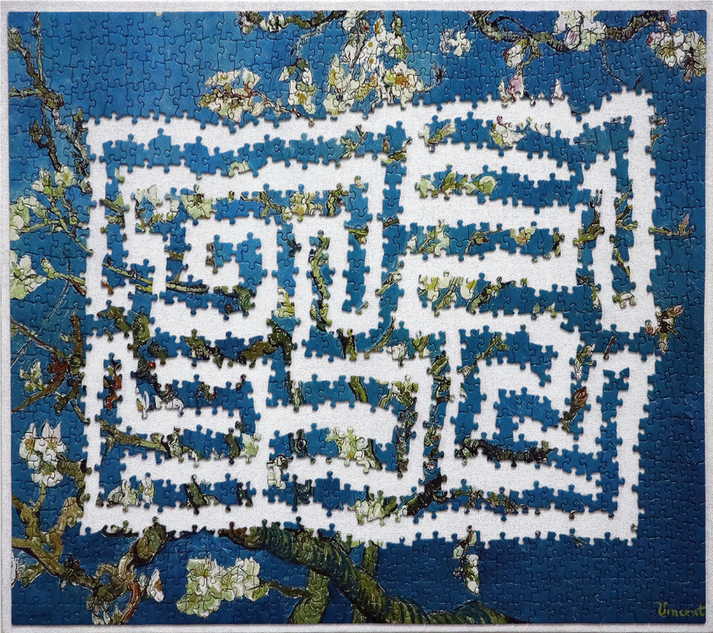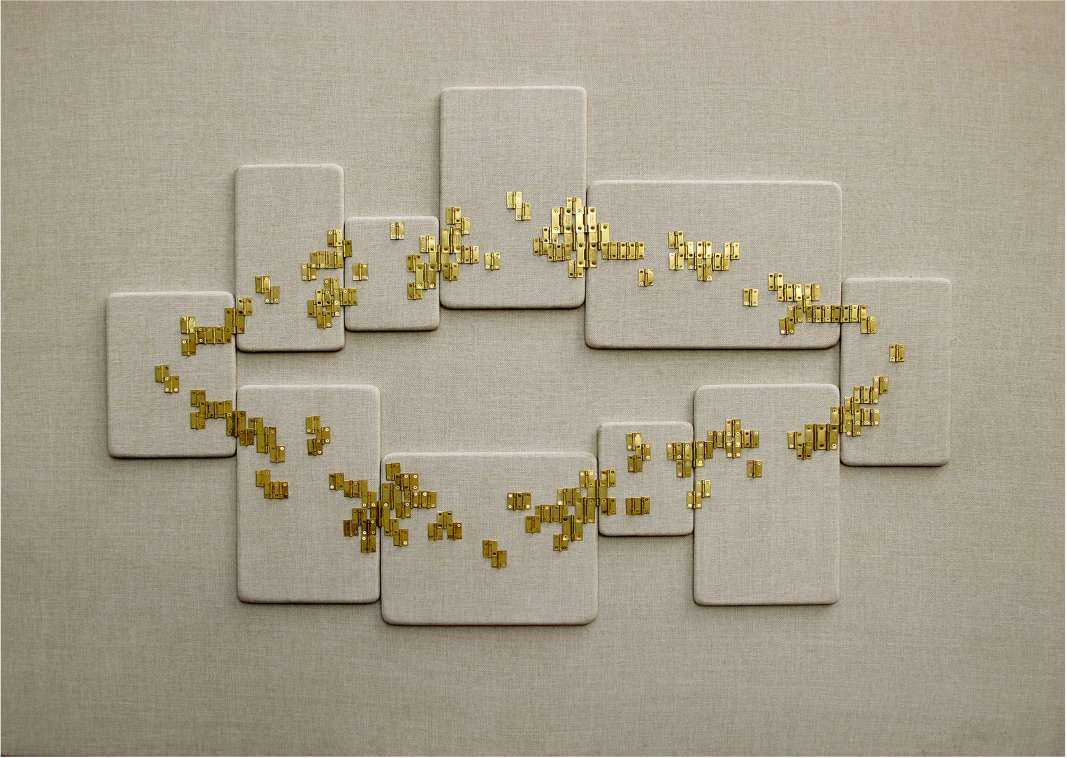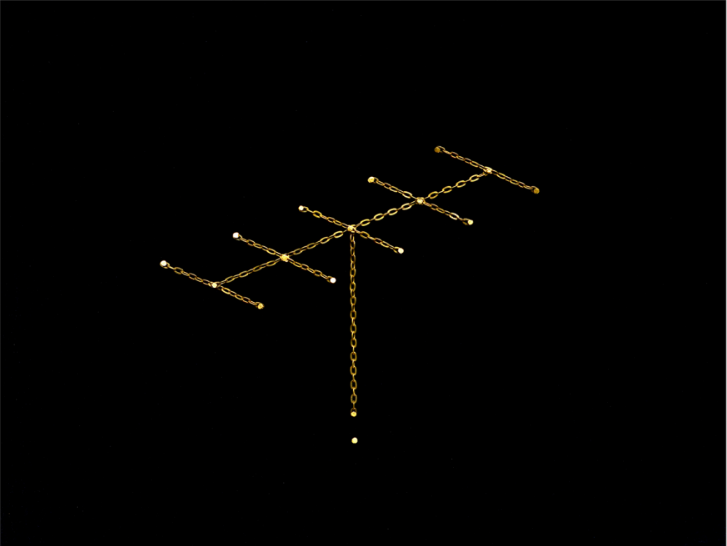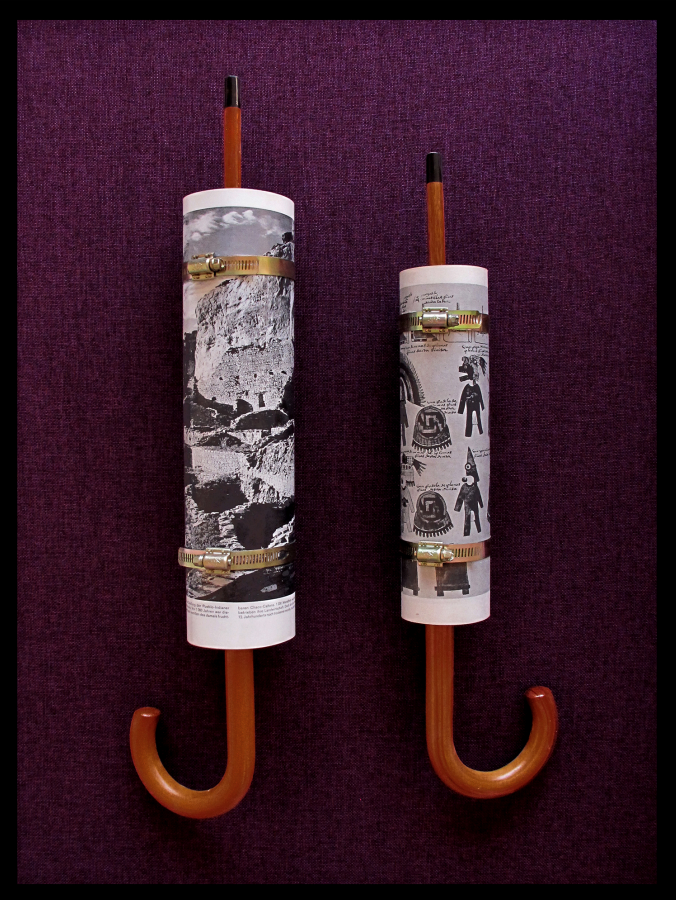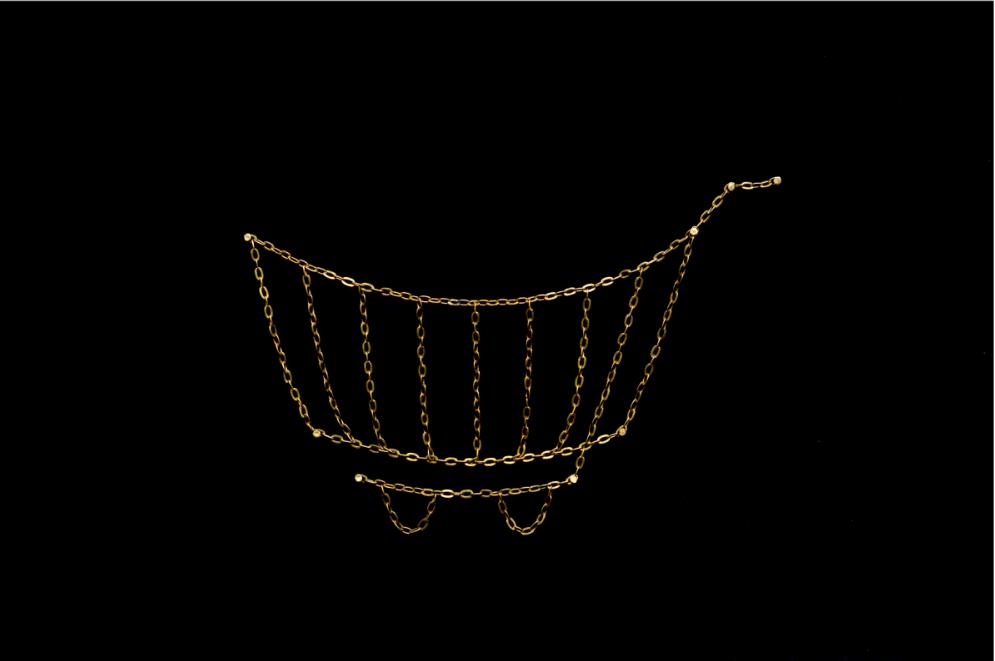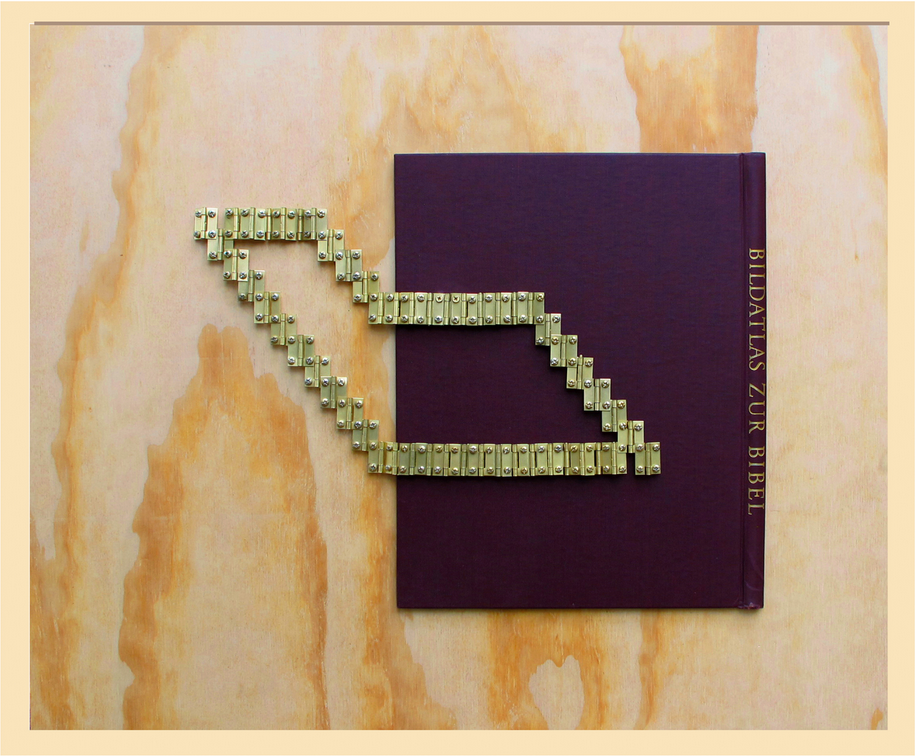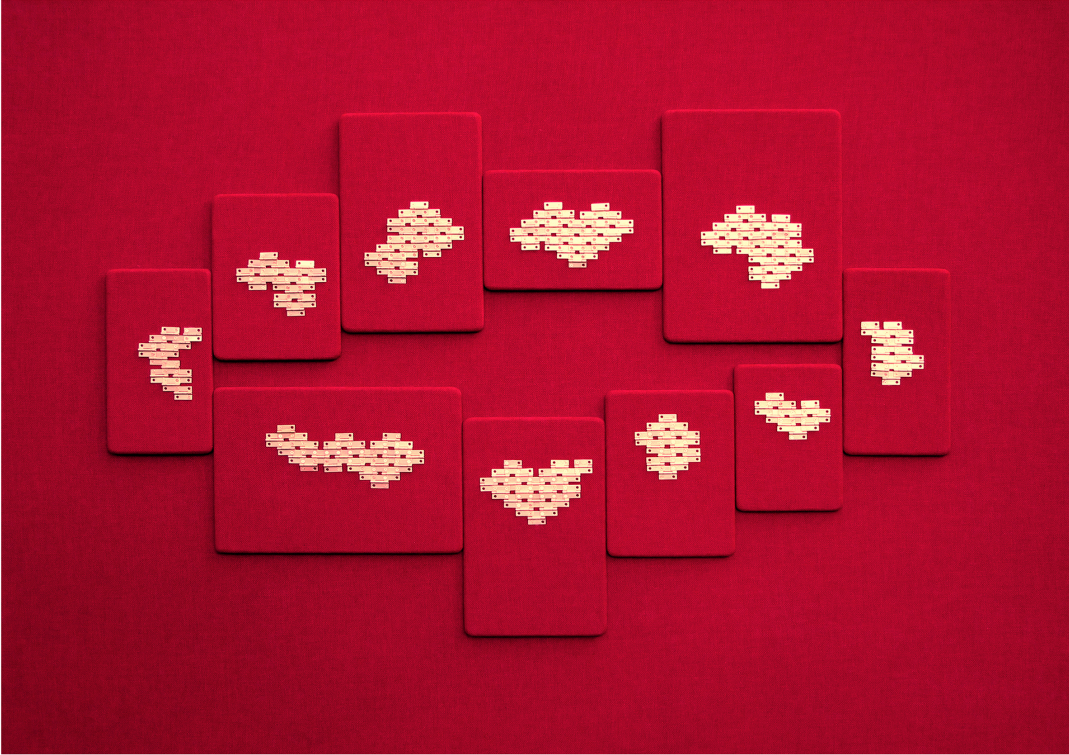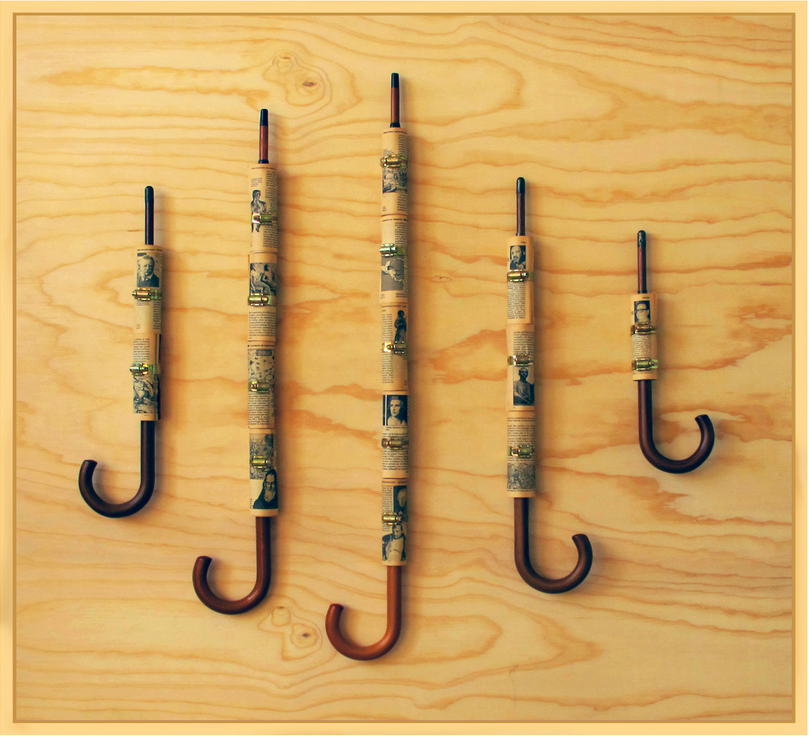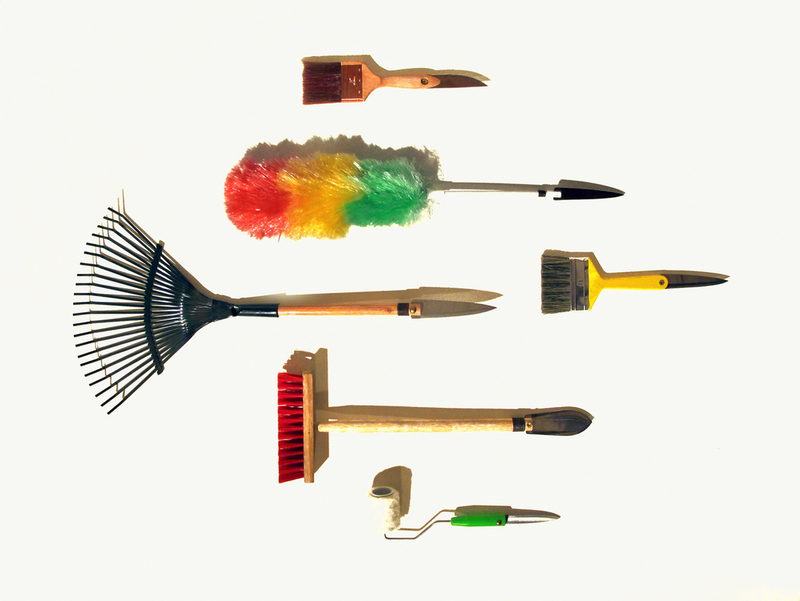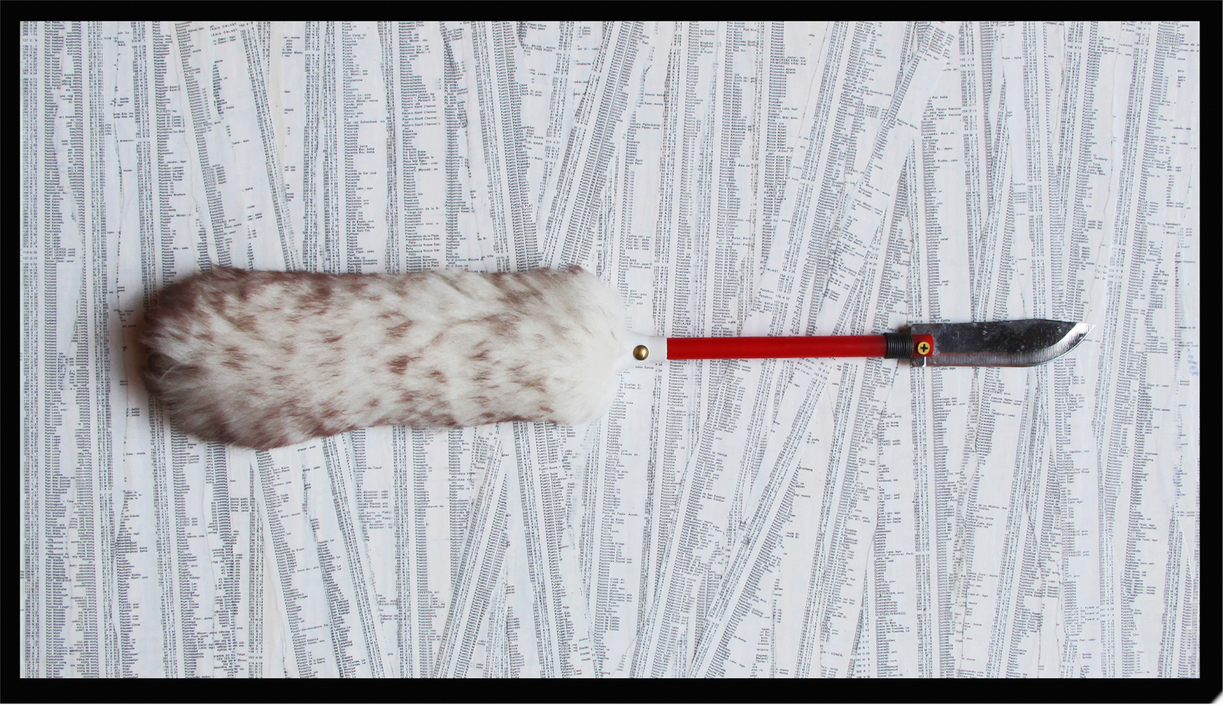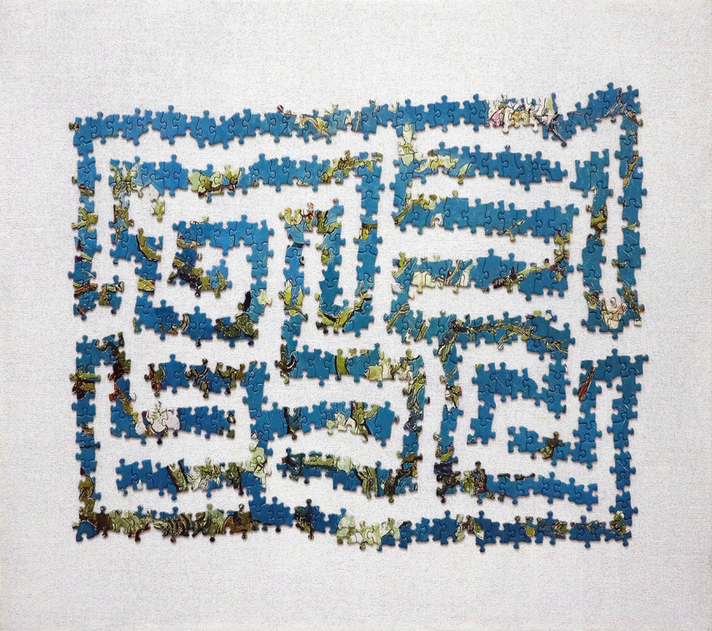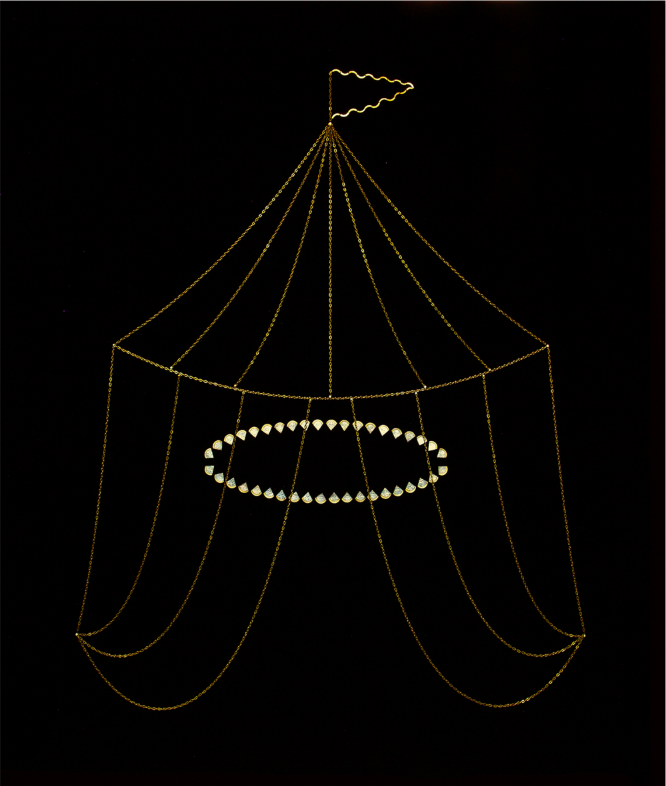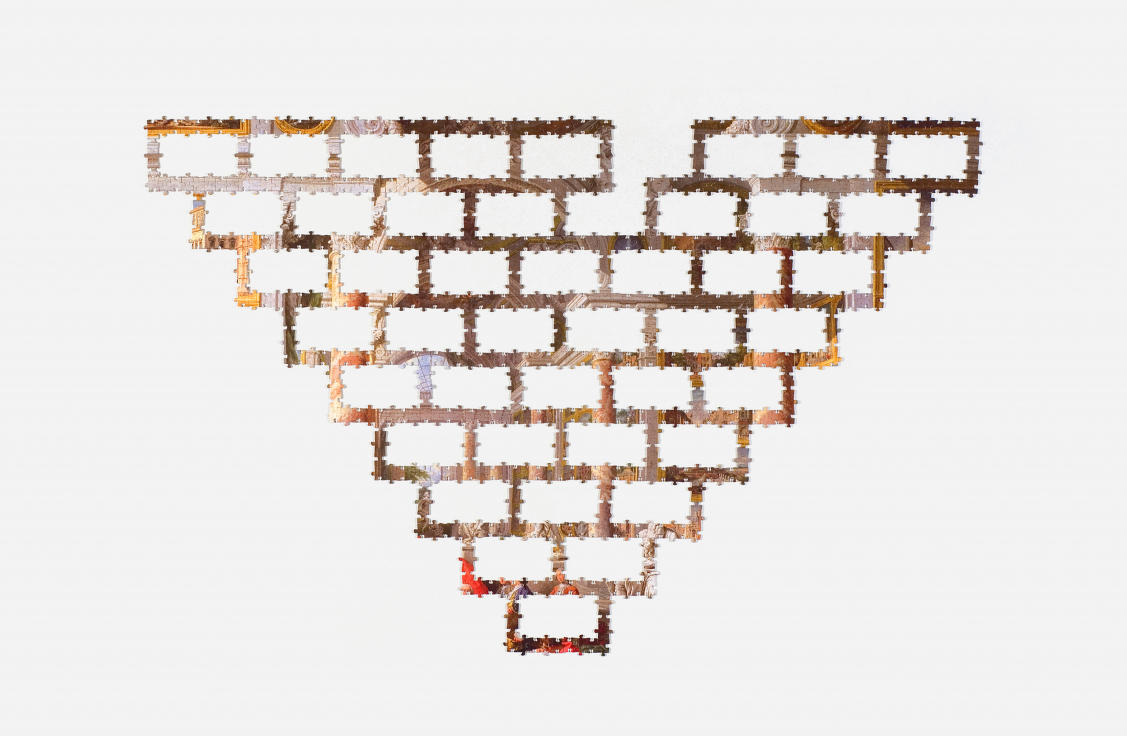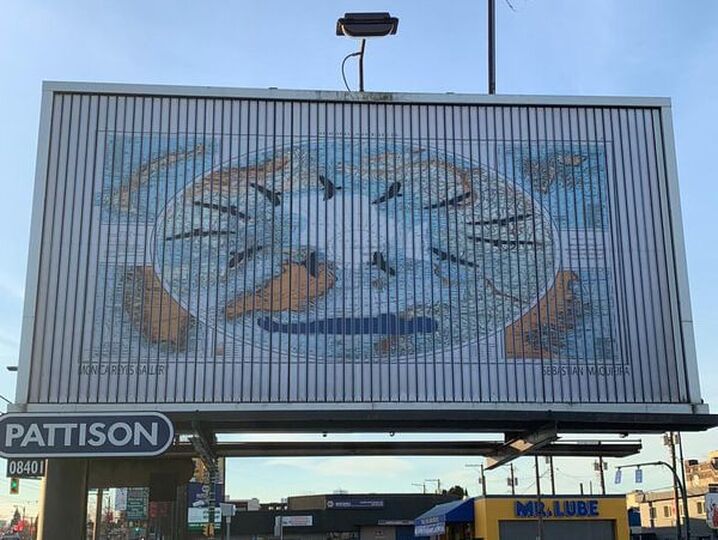Sebastian Maquieira
b.1978 Santiago, Chile
CV
In 2003 Maquieira graduated from the prestigious Finis Terrae University with a degree in Fine Arts. That same year he was awarded a scholarship to intern in the studio of Eugenio Téllez for six months in NYC. Maquieira has exhibited extensively in his native Chile and also in Ecuador, Buenos Aires and London, UK.
"I'm interested in exploring the different possibilities that certain objects and materials that come from within our cultural surroundings can offer. Once I am done with manipulating and transforming them, what they offer is a reflection on some of the ideas around the construction of our social identity that I am interested in exploring. This is how these new artifacts or montages where the sum of the parts are in a tense intersection so their aesthetic qualities can be activated as much as their functions and signals that inhabit and operate within our conscience."
CV
In 2003 Maquieira graduated from the prestigious Finis Terrae University with a degree in Fine Arts. That same year he was awarded a scholarship to intern in the studio of Eugenio Téllez for six months in NYC. Maquieira has exhibited extensively in his native Chile and also in Ecuador, Buenos Aires and London, UK.
"I'm interested in exploring the different possibilities that certain objects and materials that come from within our cultural surroundings can offer. Once I am done with manipulating and transforming them, what they offer is a reflection on some of the ideas around the construction of our social identity that I am interested in exploring. This is how these new artifacts or montages where the sum of the parts are in a tense intersection so their aesthetic qualities can be activated as much as their functions and signals that inhabit and operate within our conscience."
Lost and Found Gardens
September 10 - October 15, 2022 | Strathcona
MRG is proud to present the first solo exhibition of Santiago, Chile based artist Sebastian Maquieira in North America.
Sebastian Maquieira started working with found antique maps around 2018 using silk screening in order to emphasize his own pictorial vocabulary. From here, Sebastian expanded on his process by working with old antique books, dictionaries and encyclopedias. The exhibition “Lost and Found Gardens” comprises the use of these found materials that Maquieira then re-contextualizes, giving new meaning through multiple associations that are based on visual images and syntaxis.
Engrossed and fascinated with the knowledge and finesse that is comprised in these illustrations and identifying himself with the artists who created them, Sebastian began to collect those drawings, bringing them together, adding his own symbols in order to recreate a new place or a landscape. Each work contains a category of illustrations, such as nature, animals or human interventions. The marks added in colour represent the opposite of the encyclopedic emblems, creating a tension, a dialogue about the relationship between human intervention and nature; however, leaving the interpretation of the symbols in the works open to re-interpretation.
“Those drawings contained in old books come from a world that took place a long time ago and now seem like an obsolete way of sharing knowledge” says Maquieira. In a way the symbols in the works are lost and rediscovered by the reader. “Lost and Found Gardens” encourage us to return to a space of contemplation: Taking a step back at times when you are unsure about where you are going and looking back to bring a new clarity.
Beside his work with antique maps and books his practice is also based around objects, like the umbrella made out of a book. Those object-based works are more like a question: Is the knowledge presented in the book some kind of shelter, a refuge? The umbrella then becomes a metaphor.
Drawings of things
The ones that exist and the ones we invented
They mix like water and earth
They look like living promises
They touch without measuring distances
They turn their edges to show their other self
Thus attempting to insinuate its totality.
(Sebastian Maquieira)
The ones that exist and the ones we invented
They mix like water and earth
They look like living promises
They touch without measuring distances
They turn their edges to show their other self
Thus attempting to insinuate its totality.
(Sebastian Maquieira)
We had the pleasure to chat with Sebastian Maquieira while he was in town to install his exhibition "Lost and Found Gardens".
i. Name: Sebastián Maquieira
ii. I am an: Artist that works with images, objects and words.
iii. The name, date, and location of my current exhibit/show is:
“Lost and Found Gardens”, opening on Saturday September 10 at Monica Reyes Gallery. 602 E Hasting St.
iv. In describing the show in 3 sentences or less, I’d say:
This show is a visual dialogue between trades and crafts from different times. It´s also a love letter to all the things I find in the antique books that make my mind travel far and wide.
v. In the show, you’ll see:
Thoreau’s cabin, a fishing boat, old maps, all kind of animals, plants, trees and insects, a Ferris wheel, an escalator and multiples human inventions.
vi. The inspiration for this show comes from:
The nostalgia of these old highways of knowledge printed like beautiful ghosts.
vii. My past work includes:
Hinges, megaphones, dusters, kitchen knives, golden chains and black velvet to name a few.
viii. After this show, I’m looking forward to making a 1 month stop in Mexico and then going back to my studio in Chile to finish some new pieces of a series called “The silence of the Language” made of dismantled dictionaries.
ix. Anything to add:
Thanks to Monica Reyes Gallery for this invitation, and come see the show!
ii. I am an: Artist that works with images, objects and words.
iii. The name, date, and location of my current exhibit/show is:
“Lost and Found Gardens”, opening on Saturday September 10 at Monica Reyes Gallery. 602 E Hasting St.
iv. In describing the show in 3 sentences or less, I’d say:
This show is a visual dialogue between trades and crafts from different times. It´s also a love letter to all the things I find in the antique books that make my mind travel far and wide.
v. In the show, you’ll see:
Thoreau’s cabin, a fishing boat, old maps, all kind of animals, plants, trees and insects, a Ferris wheel, an escalator and multiples human inventions.
vi. The inspiration for this show comes from:
The nostalgia of these old highways of knowledge printed like beautiful ghosts.
vii. My past work includes:
Hinges, megaphones, dusters, kitchen knives, golden chains and black velvet to name a few.
viii. After this show, I’m looking forward to making a 1 month stop in Mexico and then going back to my studio in Chile to finish some new pieces of a series called “The silence of the Language” made of dismantled dictionaries.
ix. Anything to add:
Thanks to Monica Reyes Gallery for this invitation, and come see the show!
More Works
More Works
Sebastián Maquieira creates sculptural paintings (or pictorial sculptures) from a graphic approach that later materializes through mechanisms of object assemblages. In his most recent works, the artist incorporates objects of different origins for the construction of images where the synthesis of a structure made up of fragments prevails. The repetition of forms builds a total form, recognizable or not. In the drawings Made with chains and coins transformed by cutting operations, figures of a playful nature are distinguished: a volcano, an antenna, a circus tent. Another series of larger-format works in which he uses hinges and linen generate rather sensations of strangeness and sensuality. Maquieira's interest seems to be in the potential of objects to produce new signs, in short, in how an image is constructed: how we arrive at its form and where its meaning lies. (By: Artishock • 11/17/2015)
Billboard Project | Sebastian Maquieira
December, 2020 | Billboard at East Hastings and Clark Ave.
For our last billboard of 2020 we invited artist Sebastian Maquieira to propose one of his silkscreen on antique/found map works. The image he chose is so fitting and sums up so well the year we’ve had.
A horizontal laying human figure rests in a meditative state while crows circle above him, in the background we recognize an obsolete map.
This year we emphasize that the consequences of our acts do affect everyone around us; that we are all interconnected; that we are indeed part of the global village, that although borders can be closed down connections can remain intact, and yes, technology can be a life line.
Lots to reflect and wish for. At this time of the year when holiday cheer gets spread around like butter and good wishes for the New Year are the norm, we want to remind you that staying at home can save lives, that we hope for a vaccinated 2021 so we can embrace one another in the most basic way -- with open arms.
In 2003 Maquieira graduated from the prestigious Finisterrae University with a degree in Fine Arts. That same year he was awarded a scholarship to intern in the studio of Eugenio Téllez for six months in NYC. Maquieira has exhibited extensively in his native Chile most recently at the Museo de Arte Contemporaneo (MAC) 2019/2020 "Los límites de la Tierra. 14° Bienal de Artes Mediales de Santiago" and also in Ecuador, Buenos Aires and London, UK.
We thank art collector Dr. Ricardo Roa for his support in the production of this billboard.
The billboard is located at the intersection of East Hastings and Clark Avenue in Strathcona, the same neighborhood where the gallery is located.
The Billboard Project extends the public’s access to local artists and treats viewers to approachable, yet thought-provoking contemporary art on the billboard.
A horizontal laying human figure rests in a meditative state while crows circle above him, in the background we recognize an obsolete map.
This year we emphasize that the consequences of our acts do affect everyone around us; that we are all interconnected; that we are indeed part of the global village, that although borders can be closed down connections can remain intact, and yes, technology can be a life line.
Lots to reflect and wish for. At this time of the year when holiday cheer gets spread around like butter and good wishes for the New Year are the norm, we want to remind you that staying at home can save lives, that we hope for a vaccinated 2021 so we can embrace one another in the most basic way -- with open arms.
In 2003 Maquieira graduated from the prestigious Finisterrae University with a degree in Fine Arts. That same year he was awarded a scholarship to intern in the studio of Eugenio Téllez for six months in NYC. Maquieira has exhibited extensively in his native Chile most recently at the Museo de Arte Contemporaneo (MAC) 2019/2020 "Los límites de la Tierra. 14° Bienal de Artes Mediales de Santiago" and also in Ecuador, Buenos Aires and London, UK.
We thank art collector Dr. Ricardo Roa for his support in the production of this billboard.
The billboard is located at the intersection of East Hastings and Clark Avenue in Strathcona, the same neighborhood where the gallery is located.
The Billboard Project extends the public’s access to local artists and treats viewers to approachable, yet thought-provoking contemporary art on the billboard.
La deriva de los horizontes
Sebastian Maquieira at the 14 Bienal de Artes Mediales in Santiago de Chile, 2020
14 Bienal de Artes Mediales De Santiago, Curatoría: Los límites de la Tierra
The drift of horizons
The project The drift of the horizons, consists of the installation of a group of oars on the Lo gallardo bridge. This bridge was the last to cross the Maipo river before its exit to the sea. Today it is in ruins after it collapsed in the 1971 earthquake. The scene of the oars on the ruins of the bridge try to destabilize the gaze to activate reading layers that can mainly rotate around 3 axes: The presence of the oars and their function, space and context where they have been placed and the question about their crew. Once this installation, which is duly recorded in photography and video, is dismantled to be installed again in the Hall of the Museum of Contemporary Art, in the context of the 14th Biennial of Media Arts, where a new dialogue begins from the same premises, but in the specific context of the Museum.
The project The drift of the horizons, consists of the installation of a group of oars on the Lo gallardo bridge. This bridge was the last to cross the Maipo river before its exit to the sea. Today it is in ruins after it collapsed in the 1971 earthquake. The scene of the oars on the ruins of the bridge try to destabilize the gaze to activate reading layers that can mainly rotate around 3 axes: The presence of the oars and their function, space and context where they have been placed and the question about their crew. Once this installation, which is duly recorded in photography and video, is dismantled to be installed again in the Hall of the Museum of Contemporary Art, in the context of the 14th Biennial of Media Arts, where a new dialogue begins from the same premises, but in the specific context of the Museum.
